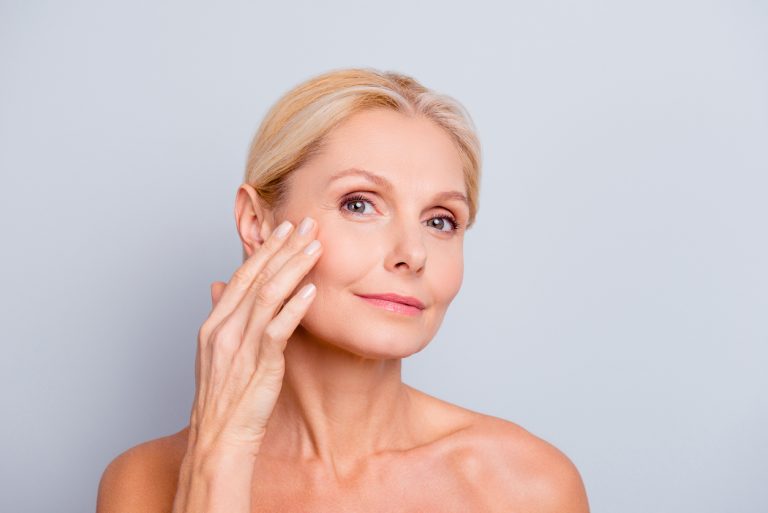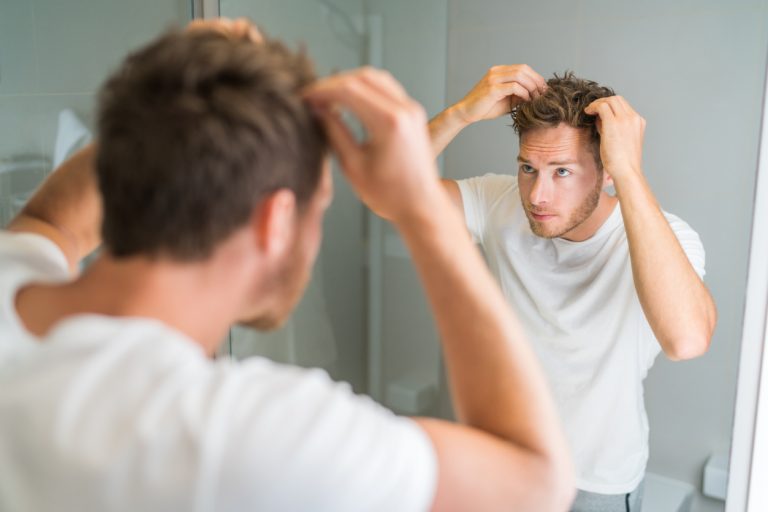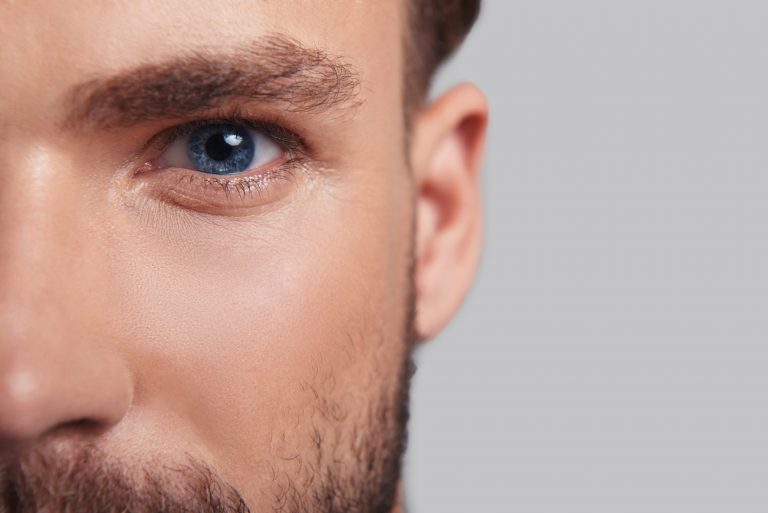Depending on the cause of hair loss, procedures may include topical and oral therapies. One of our treatments activates stem cells for hair growth on the scalp. Whilst transplantation is the most heavily marketed way of addressing lost locks, regrowth is not a one-size-fits-all scenario. There are other options that can prove effective.
Male and female hair regrowth treatments in Melbourne
- Topical and oral medications prescribed by doctors
- Regrowth strategies
- Stem cell activation
How PRP works for regrowth
To activate stem cells, we inject a special substance into follicles that acts as a growth stimulant. Growth factors and stem cells are used to trigger the follicle, activating the stem cells and causing underdeveloped or underactive follicles to grow.
Our treatments don’t work for all types of hair loss, but can work for a few different forms of hair loss in men and women.
Does stem cell therapy actually work?
This treatment works in certain circumstances, but results depend very heavily on the state of the scalp to begin with. It also depends on the cause of follicle impairment or loss. You may expect just some regrowth after a procedure, not a full head necessarily – but, everybody is different, so results really do vary considerably.
Catching hair loss early means greater support for your underactive follicles. Follicles can be stimulated into producing hair, supporting healthy, functional follicles.
Expectations need to be managed when it comes to hair loss. Sometimes regrowth is an impossibility or results are very limited. Sometimes, the treatment itself is worse than the hair loss, ( yes it can be painful) and needs to be abandoned.
The research into hair-loss treatments
One study (Swapna et al 2014) offered us this: ‘…injection for androgenic alopecia is a simple, cost-effective and feasible treatment option for hair loss and can be regarded as a valuable adjuvant treatment modality…’
So how did they test the injection treatment ?
The research team recruited participants who had previously tried other (unsuccessful) hair loss treatments. The schedule included four injections across the scalp. Over the study period, hair counts increased from an average of 71 follicular units to 93 follicular units. That means just over 22 more hairs per square centimetre on the scalp.
Researchers also conducted what’s known as ‘hair pull tests’ before and after the study, finding that a mean of 10 hairs came out of each man’s head prior to treatment when pulled, but after the PRP injections, the pull tests were mostly negative. That means no hairs came out when pulled in nine out of the 11 study participants. This indicates that not only did the treatment work to increase hair count but also strengthened follicles.
The study group was small; however, these results in men who had undergone previously unsuccessful procedures were impressive and encouraging. The men in the study reported an average satisfaction rating with the injections of seven out of 10.
How a treatment session occurs
The actual treatment is reasonably straightforward. The doctor removes about 120ml of your own blood from your arm. The blood is then put into a special centrifuge (ours results in a denser mixture at the end – we use the Angel centrifuge), which separates out the red and white blood cells from the plasma and platelets.
This process takes about 10 minutes.
Then, using a special injector with multiple prongs (to reduce the time it takes to cover your whole scalp) is used to inject the treatment into your scalp. Anaesthetic is used to avoid any discomfort. The process is then complete for one of your sessions. You need multiple sessions to get results. Sessions in total can take approximately an hour.
Other hair regrowth strategies
We have a range of treatments including medication, lasers and PRP.
Medications and drugs
Some loss can be halted or reversed, but it will depend on the cause. Patchy loss sometimes resolves itself with no treatment over a period of months.
The idea behind treatments is ideally hair regrowth, but also to slow or hide loss. Medication-based male treatments include Minoxidil (Rogaine) or another prescription-only drug in pill form.
Minoxidil Hair Loss Treatment (Rogaine)
Minoxidil is available over the counter, and is used as a scalp rub twice daily. It can be used by men or women. Minoxidil has been shown – in some people – to reduce loss or increase growth rates. The effects are most apparent after 16 weeks, but you must keep applying the product to see the effects. Side effects include irritation, unwanted growth on nearby areas (face or hands), and rapid heartbeat.
Prescription-only medication in pill form
This prescription is only available to men and is taken as a pill. The drug in the pill can slow loss and some new growth may appear. The effects only continue so long as you are taking the pill. Side effects include the possibility of reduced libido and sexual function, and an increased risk of prostate cancer. Pregnant women should not touch crushed or broken tablets.
Medications that cause alopecia
Some medicines can cause hair loss, with the most well-known of these being chemotherapy drugs. Other drugs can cause hair loss too, however, such as anti-inflammatory drugs or immunosuppressants. Drugs include those used for cancer, arthritis, depression, heart and circulatory issues, and birth control.
Surgical interventions
Surgery revolves around hair transplants. A surgeon removes the hair with a tiny bit of follicle still attached from another part of your body and implants it on the scalp. Medication may be required at the same time. Hair transplants can become quite costly and uncomfortable, with risks including infection and scarring.
We do not perform hair transplants at ENRICH Clinic.
Hiding hair loss
Wigs or hairpieces are sometimes the best option for those of you who can’t regrow your hair, no matter what you have tried. There are some beautiful hairpieces available, so there is no need for this to be obvious to anyone except yourself.
Male and female hair loss testing
A diagnosis must be made to make sure underlying disease can be ruled out or identified and managed accordingly.
Blood tests
You will be required to undergo blood tests to rule out diseases, in particular, thyroid issues.
Elements that contribute to hair loss include:
- Genetics (family history)
- Hormones
- Disease
- Medicines






